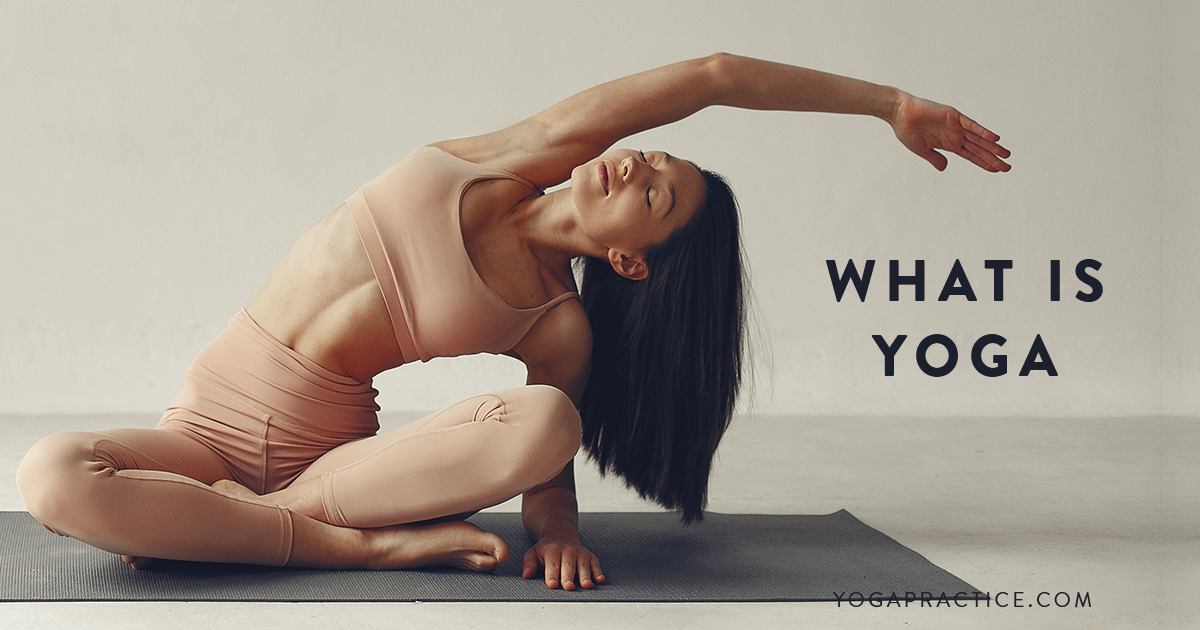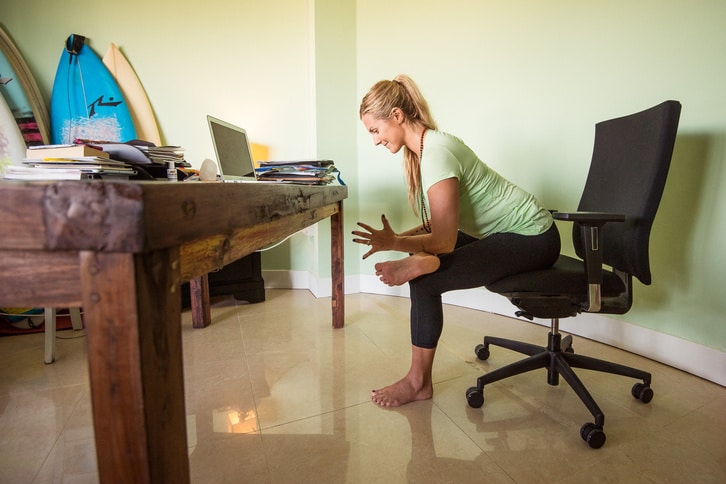
Yoga is a form of exercise that promotes deep relaxation. This type of movement is slow and passive, which can help you feel calm. During this type of pose, your body will be supported by props that provide a cushion for different body parts. These props will help to avoid the overextension of the muscles and joints and will prevent the parasympathetic nervous system from taking over, which can cause pain. An example of a restorative yoga pose is the crown Chakra.
You can easily shimmy your hips at home by using a shimmy hip pose. Simply place your palms on top of your shoulders and bring your elbows together. Take a deep breath and exhale. For extra support, you could also place a bolster or pillow underneath your lower back. This pose is especially beneficial for people with achy backs and necks. This posture can relieve your pain and increase your sense of well-being.

The seated pose is another restorative pose. This pose requires you to sit next to a wall with your legs extended and your knees against the wall. Relax your body and mind, and take a deep breath. For five to ten seconds, hold the position. You can also hold it for as long as necessary. Alternate between standing and sitting. You can use a blanket, bolster, or other support to assist you in staying seated.
Restorative yoga poses can be challenging for many people. Props can help you focus on your breathing and find the perfect position. You can also experience a state or meditation with props. Practicing restorative poses is particularly beneficial for people with joint problems, back injuries, or chronic pain. These exercises have many benefits and are well-worth your time. These techniques can help you relax and feel more calm.
It is a great way for you to relax after a long work day. They are also a great way for you to unwind after a busy day. These poses are easy to do at home, in a class, or anywhere else. Whatever your preference, restorative pose can be a wonderful way to unwind at the end of a tiring day. Because they're not meditative they don't need any particular physical effort.

The best way to let your mind and body relax is through restorative poses. By allowing your body to open and reset itself, these poses are essential for healing from stress and disease. They can also be a great way for your body to feel more flexible. You should look for a class that offers restorative postures if you want to take a good yoga class. They will not only help you feel better after practicing these poses, but they will also improve your overall health.
FAQ
Eggs good for men
The egg is rich in all nutrients needed by the human body. It helps to maintain strong bones and healthy hearts and lungs and stabilize blood pressure.
Eggs are an excellent source of protein, vitamins A, B12, D, E, K, calcium, phosphorus, iron, zinc, copper, magnesium, selenium, and riboflavin.
The egg yolk is high in cholesterol. However, it does not contain saturated fat. Eggs have less saturated fat than many other foods.
In addition, they are low in sodium and calories. You can make them in any way you like. They can be cooked in a variety of ways: poach, saute, bake, hard-boil or fry.
They are delicious and very easy to prepare.
At least two whole eggs should be consumed each day. You don't have to eat eggs.
Essential nutrients are found in eggs. Add eggs to your diet today.
What is your favorite workout to build muscle mass?
There are two main things you must do when building muscle mass. These include isolation exercises and compound movements. While isolation exercises focus on specific muscles, compound moves target multiple muscle groups simultaneously.
The best way to improve your workouts is to choose exercises that challenge all your major muscle groups. This ensures that each session is challenging.
MyFitnessPal can help you keep track of your activity. You can log everything, from calories burned to weight lifting. You can also create custom meal plans based on your goals.
Do I have to do it every day?
No! At least 30 minutes moderate-intensity exercise five days per week is a good goal. That means walking fast enough to be slightly out of breath or biking hard enough to sweat.
Statistics
- Are You One of the 20% of Guys (mh.co.za)
- According to the American Academy of Dermatology (AAD), men over 50 are at a heightened risk of developing it. (healthline.com)
- By John Thompson Take a whopping 38% off a set of PowerBlock Pros. (menshealth.com)
- An estimated calorie range for moderately active adult males falls between 2,200 to 2,800 calories per day, depending on age. (eatright.org)
- Cardmembers earn 5% Back at Amazon.com with a Prime Credit Card. (amazon.com)
External Links
How To
How can I exercise to burn fat?
Exercise burns calories by increasing metabolism and oxygen consumption.
Moderate intensity exercise is a safe way to lose weight.
These tips will help you burn fat and keep fit while exercising.
-
Cardio exercises like walking, running (or jogging), swimming, cycling, running, and/or elliptical training are all good options.
-
Three times per week, exercise for 30 minutes.
-
Strength training is a great way to lose weight.
-
Avoid intense training. You can build muscle without breaking down muscle tissue.
-
Drink plenty of water during exercise. Water is essential for flushing out toxins and keeping your body hydrated.
-
Choose low-fat protein shakes after working out. Protein shakes are great for your muscles and energy.
-
You can eat smaller meals throughout the day so that you don't feel hungry in between meals.
-
Don't skip breakfast! Skipping breakfast can lead to fatigue and sluggishness.
-
Take care of your mind. Stressful situations can affect your metabolism.
-
Keep a positive attitude. Studies show that people who believe they're overweight gain more weight than those who think they look pleasing.
-
Get enough sleep. A lack of sleep makes it difficult to lose fat.
-
Active living is key. Be sure to get up and move around every hour or two.
-
Maintain a healthy diet. Eat right to feel satisfied and full for longer.
-
Relaxation is possible by finding ways to relax. Relaxing doesn't mean your body releases stress hormones which cause muscle tissue to be destroyed.
A balanced diet provides all the nutrients necessary for growth and development.
You should eat six small meals per day rather than three large ones. This gives your body the time it needs to process what you've eat.
For strong bones, we need 500 mgs of calcium daily. Calcium can be found as a dairy product such as milk, yogurt and fortified soy drinks, orange juices, cereals, breads, and cereals.
Calcium is found in leafy green vegetables and beans, tofu as well as nuts, seeds, cheese, and seeds.
Vitamin D is essential for calcium absorption. Vitamin D can also be found in some fortified foods such as eggs, fish, and yolk.
Vitamin E is crucial for skin health. Vitamin E can also be found in vegetable oil, wheat germ oils, peanuts as well almonds, sunflower seeds and corn.
Your body needs zinc for normal immunity function and wound healing. Zinc is found in oysters, legumes, meats, whole grains, and seafood.
Zinc deficiency could cause fatigue, nausea, vomiting, and depression.
Insulin resistance is caused by eating too much sugar, which can increase blood glucose levels. Insulin resistance causes weight gain.
Insulin resistance occurs when the bloodstream is full of free radicals. Free radicals can be molecules with unpaired electrons that cause damage to cell membranes.
Free radicals come mainly from food additives, pesticides, herbicides, preservatives, smoking, air pollution, radiation, chemicals in cosmetics, lotions, and household cleaning supplies.
Free radicals can lead to cancer and heart disease, diabetes mellitus, arthritis, asthma, and premature aging.
A well-balanced diet rich in antioxidants is the best way for you to avoid free radical damage. Antioxidants protect against oxidative damage.
Antioxidant vitamins include Vitamin C (found in citrus fruits), beta carotene (found in carrots, sweet potatoes, spinach, broccoli, cantaloupe, apricots, squash, mangoes, peaches, peppers, tomatoes, cabbage, cauliflower, kale, Brussels sprouts, collard greens, watermelon, and strawberries), and Vitamin E (found in nuts, olive oil, avocados, and eggs).
Selenium, manganese (and zinc) are other antioxidant nutrients.
Selenium helps protect cells from oxidative damage caused by free radicals. Selenium can be found in Brazil nuts and liver, kidneys, liver, kidneys, shrimp, cod, turkey and lamb as well as chicken.
Copper protects your eyes, brain, eyes and red blood cell. Copper is also found in poultry, meat, and organs.
Manganese plays an important role in bone structure. Manganese is found in brown rice, spinach, bananas, prunes, raisins, oatmeal, and lentils.
Zinc is necessary for average growth, reproduction, and wound healing. Zn can also be found in white fish, lean cuts of meat, poultry, and eggs.